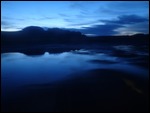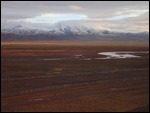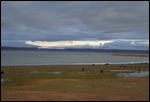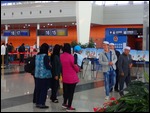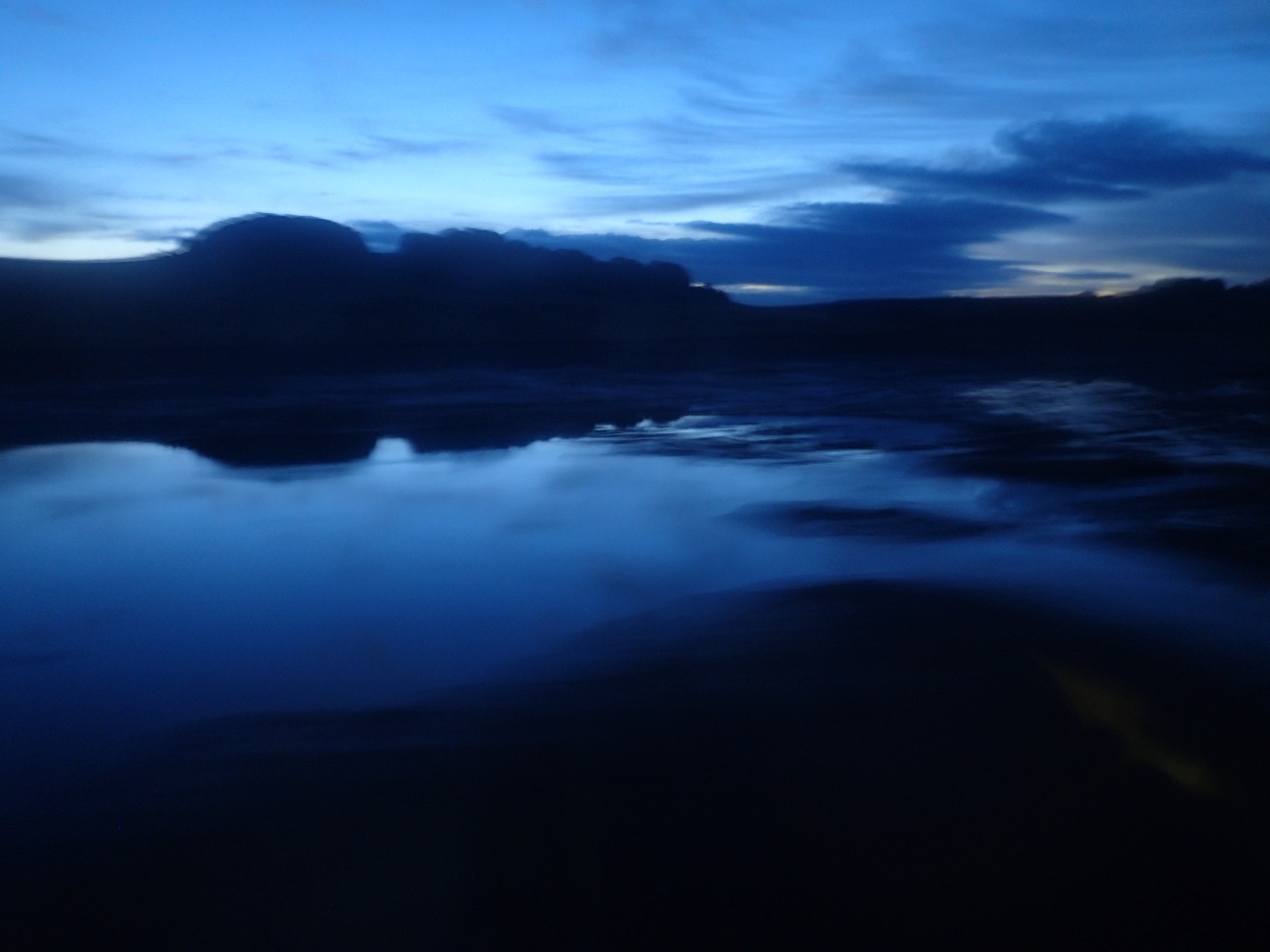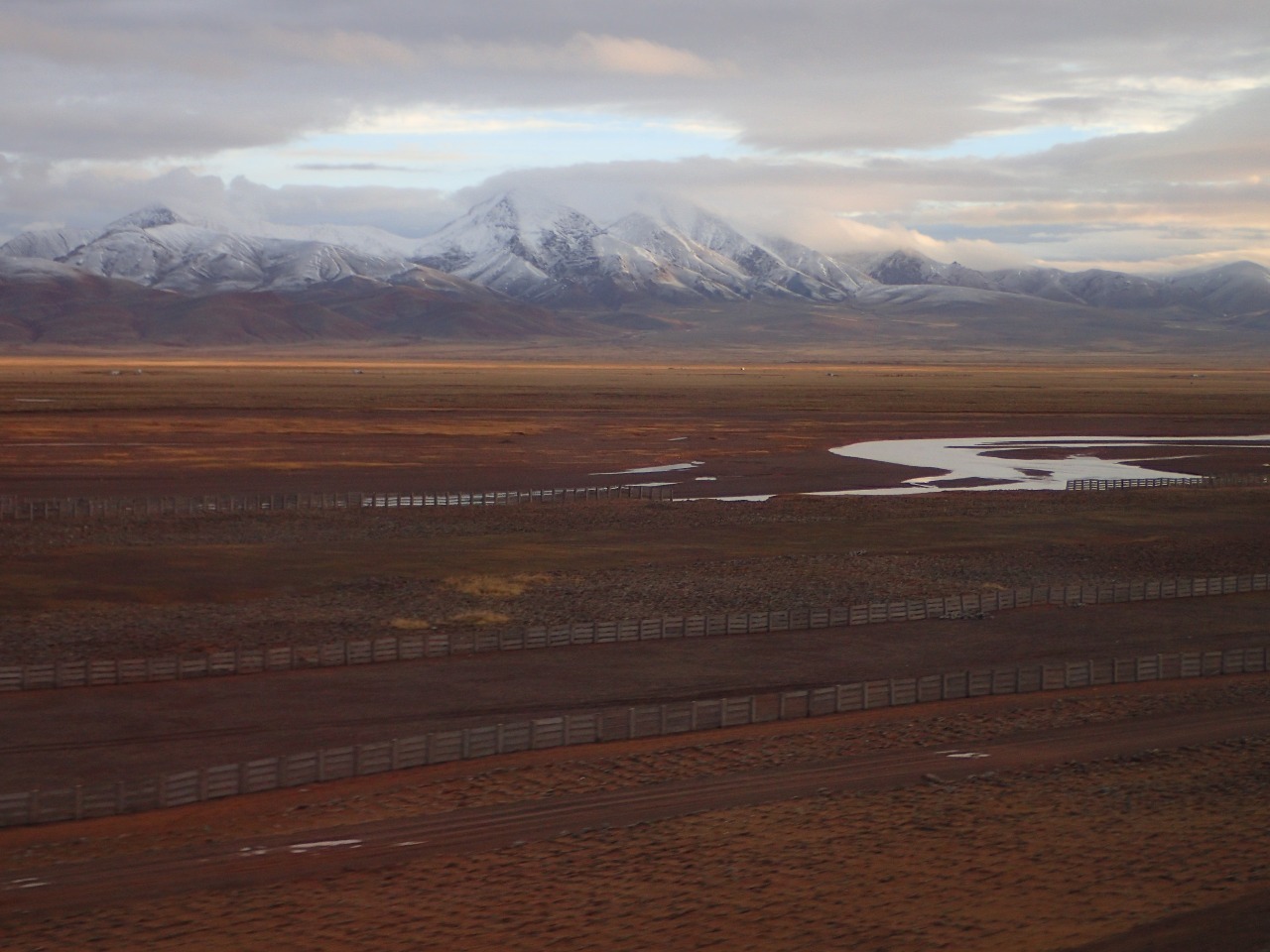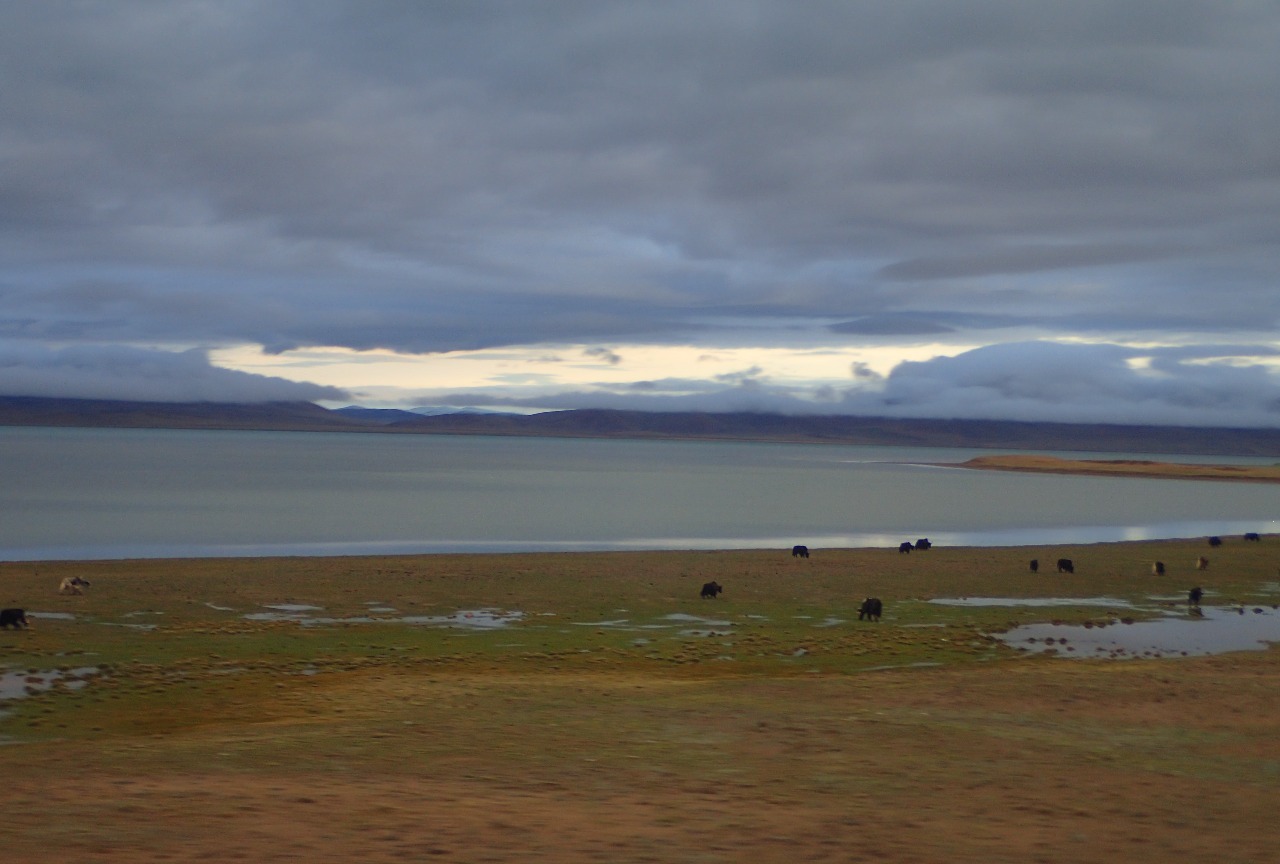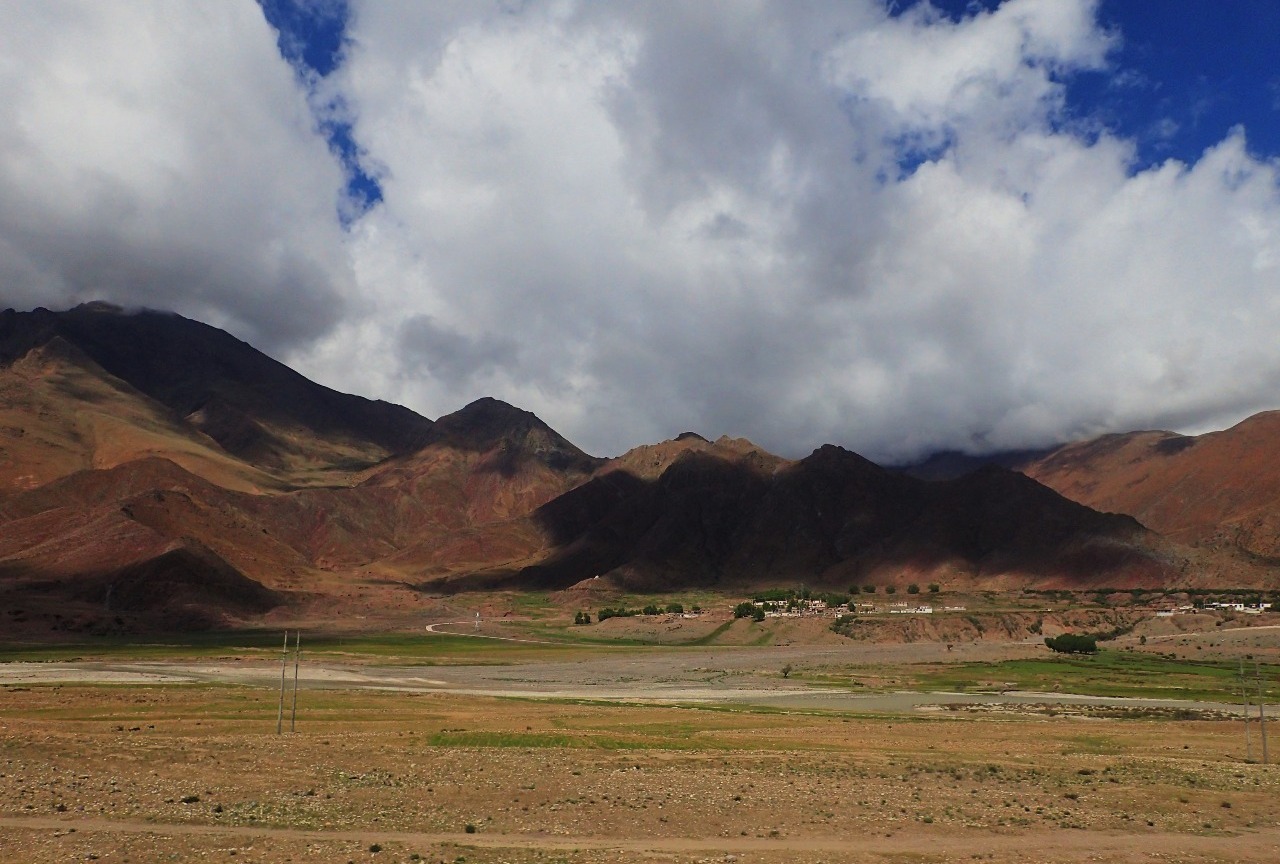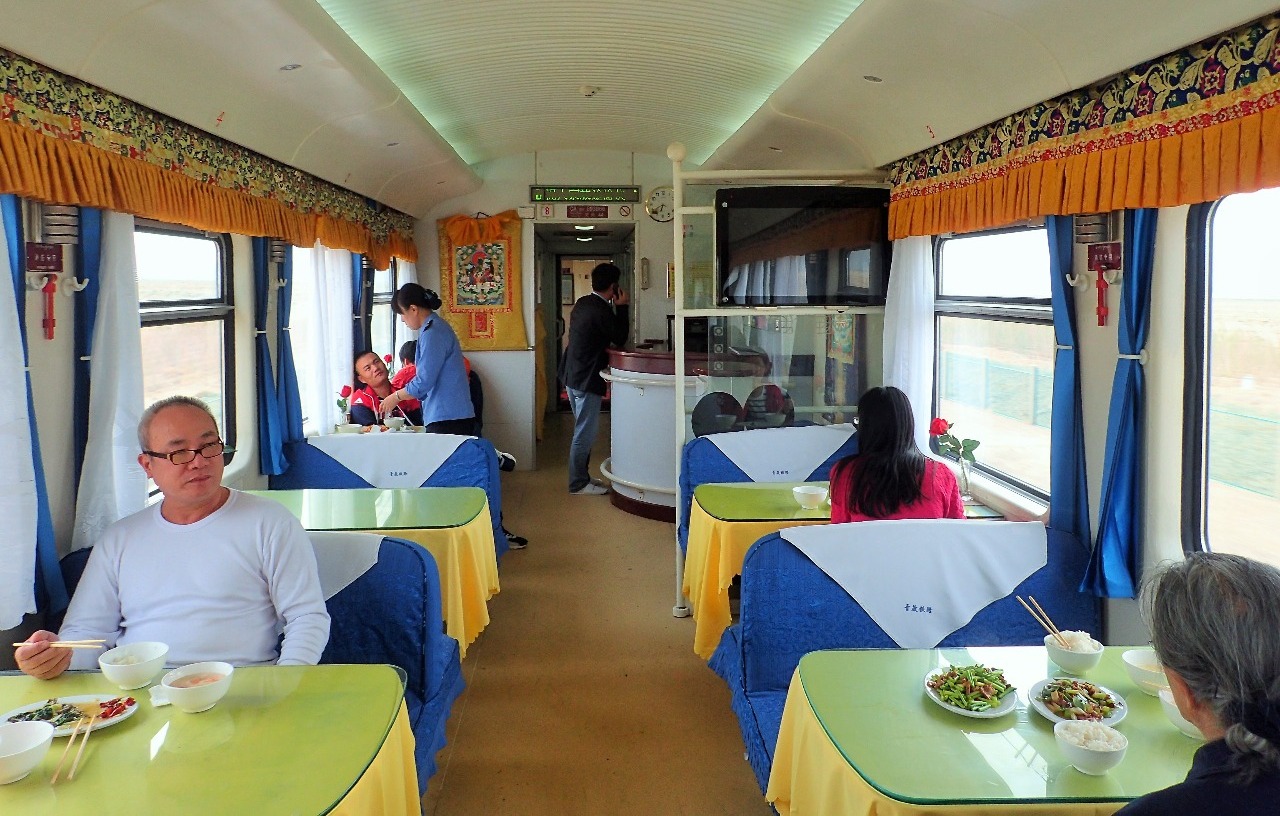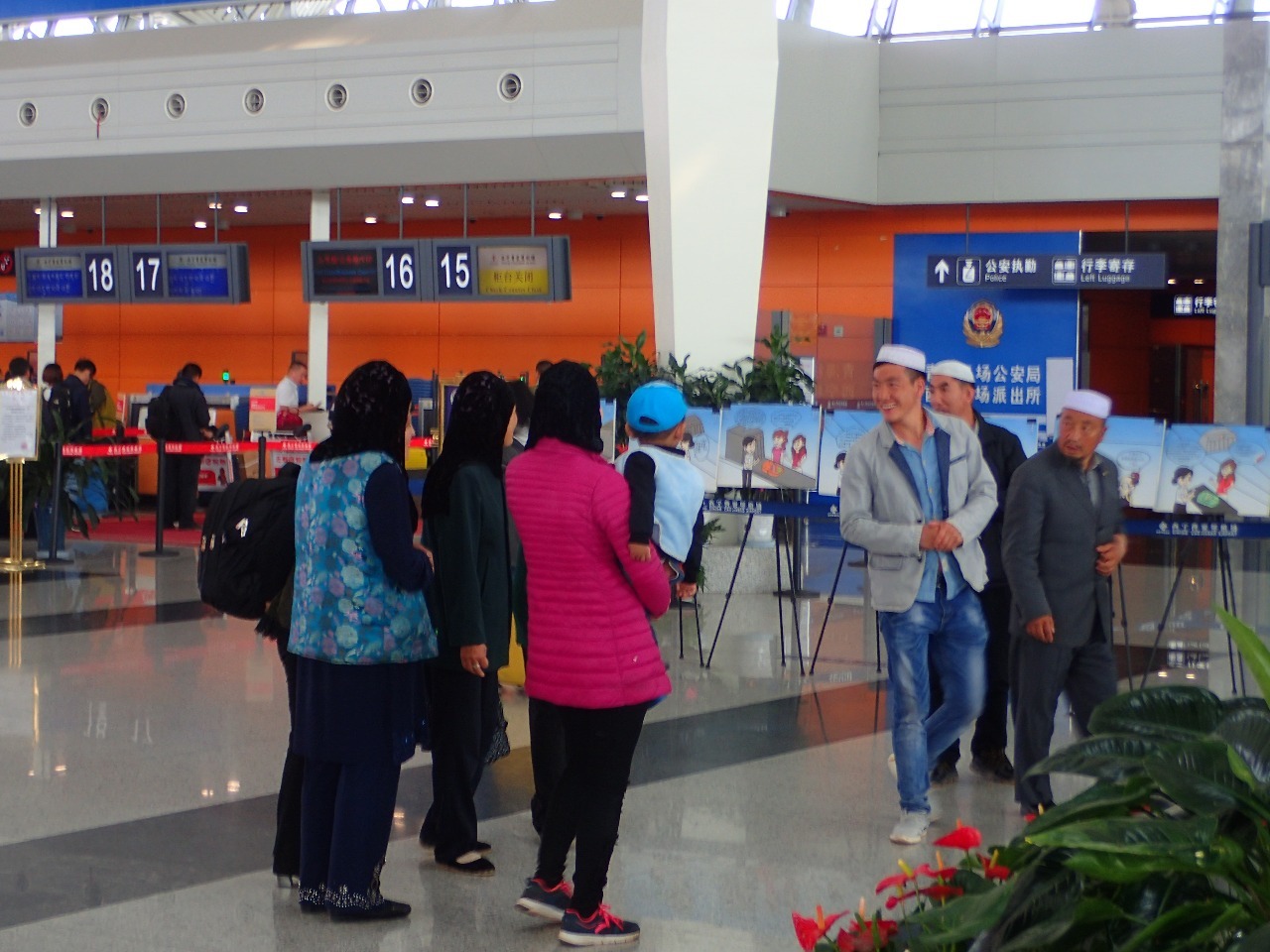The Qinghai-Tibet railway is the world's highest railway. Completed in 2007, it travels for 1233 miles on the "Roof of the World" - a vast plateau as much as 3 vertical miles above sea level. Only recent advances in railway construction technology enabled it to be built, over hundreds of miles of permafrost, huge expanses of fragile wetlands and rivers, and mountain passes as high as 16,700 feet (5100 meters), Oxygen-enriched air is pumped into train cabins to lessen the risk of altitude sickness on passengers.
Xining is the town in Qinghai Province of China where the train to Tibet begins. My mom and I flew to Xining from eastern China via different domestic Chinese flights. My flight was on Tibet Airlines. I noticed that English language announcements on Tibet Airlines had good American accents unlike the other domestic airline I traveled with on this trip. Each announcement on Tibet Airlines was announced three times, in Tibetan, Mandarin, and English. Xining is a multi-ethnic Chinese city at the gateway of Tibet, with large Tibetan and Muslim populations. The muslim population is more conspicuous for the men's skullcaps and women's scarves; their halal lamb is also the regional specialty food of Xining.
I met up with mom in Xining airport. Our tour operator (Wind Horse Tours - windhorsetour.com) told us to expect our driver waiting at the airport. I found him - a young Tibetan named Phakmo holding a sign with our names on it. As a traditional Tibetan sign of welcome, Phakmo gave an orange khata (scarf) to me and a white one to mom. He then drove us to the train station since there weren't enough time for lunch.
At the train station we boarded the train and settled in a compartment consisting of four sleepers. Two British ladies - Glenda and Sara became our bunk mates after some shuffling. Glenda currently lives in Australia and Sara in England, and they had traveled all over the region before, including Bhutan, Myanmar, and Yunnan Province of China. We happened to stay in the same hotel in Lhasa, and again by pure coincidence ran into them on a road trip - on the 8th level of the Kumbum tower in Pelkor Chode Monastery in Gyantse.
The train sleepers were cramped but reasonably comfortable. The staff spoke Mandarin which mom and I could communicate with, but our British friends could not. Luckily Glenda found a Chinese tour guide guiding an Austrian group in the same sleeper car, and were able to communicate in German. The dining car offered typical but fairly skimpy Chinese dishes; many young people gathered to play cards there outside of dining hours. The Chinese and Tibetan passengers on the train were mostly younger, few looked over 50 years old. I recall our Tibetan driver Phakmo said he decided to return to Xining after working in Tibet for 10 years, due to the negative health effects of high altitude.
By evening the train reached Golmud, a "Wild West" kind of town I stayed at 14 years ago on my last trip to Tibet. During the afternoon we already passed a few snowy mountain ranges, sandy desert, salt flats with a vast mining operation, and China's largest lake - Qinghai Lake - whose treeless, wind-swept shores are surrounded by short grass pastures. Millions of sheep, a few groupings of tourist yurts, and an occasional golden-roofed Tibetan Buddhist temple. The four of us pointed out the scenery to each other and we snapped pictures left and right. Glenda was fond of the streetlights powered by solar panels, and complained that Australia had no government incentives for solar energy.
Passing the night was a bit uncomfortable due to the high altitude; this was the first health test for all of us. Our bunk mates took western medicine to counteract altitude effects, my mom took Tibetan medicine, and I took a single painkiller pill despite having altitude medicine with me, just to test my physical conditioning. When morning came, none of us slept very well but it was adequate. I started photographing the twilight from train windows as the train rolled through a bleak plateau of barren plains and vast rivers. Snow-covered mountain peaks were half-hidden in clouds and fog, while the ground, often covered by snow flecks, stayed wet and dreary. No tree nor significant vegetation existed anywhere. When I walked by the oxygen machine at one end of the sleeper car, the monitor screen showed the current elevation to be 14,888 feet. As we were a few hours before arriving in Lhasa, the train crossed Nyenchen Tangla Range whose snow-capped high peaks could be seen, but soon after horizontally blowing rain and hail pelted the train, making the ground outside the train windows largely white. Less than an hour later, the sky cleared up into a deep blue color, and vivid 3-dimensional white clouds floated across the sky. This is what I remember of Lhasa, whose bright sun, bright white clouds, and deep blue sky are unforgettable.
After traversing a few rugged valleys in beautiful sunny weather, we arrived in Lhasa, then spent extra time going through special formalities reserved for foreign tourists and visitors from China's significant muslim provinces. Outside the train station, we found our guide Trinley who gave us khata scarves as a welcome gesture. Trinley helped our British friends connect with their guide, and then took us to our hotel in the center of Lhasa near the holiest temple - the Jokhang.
